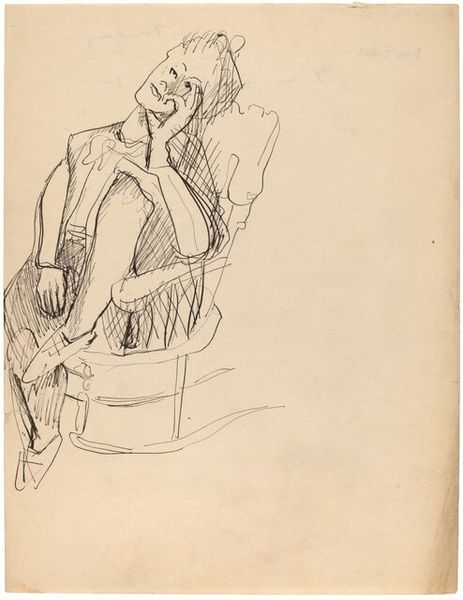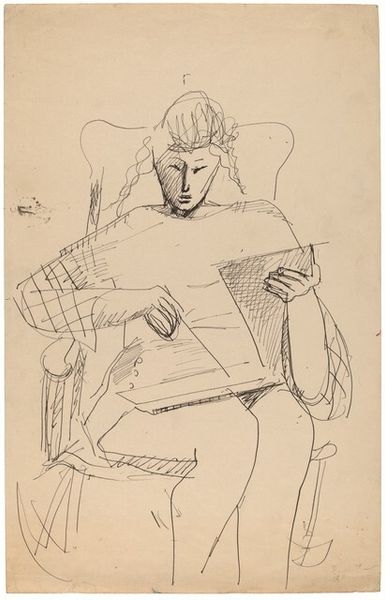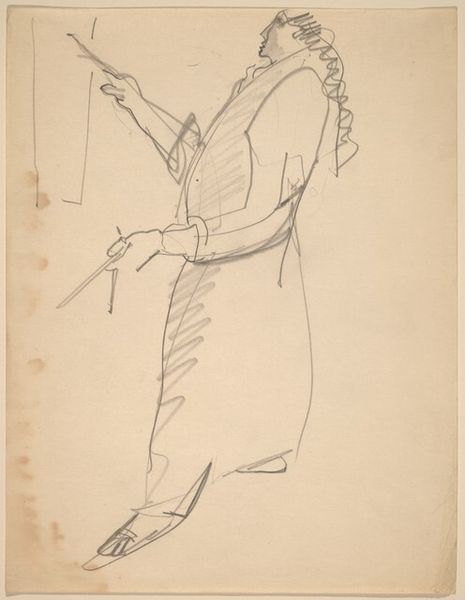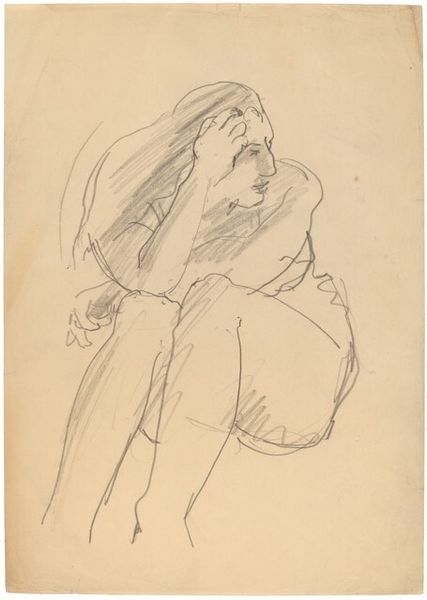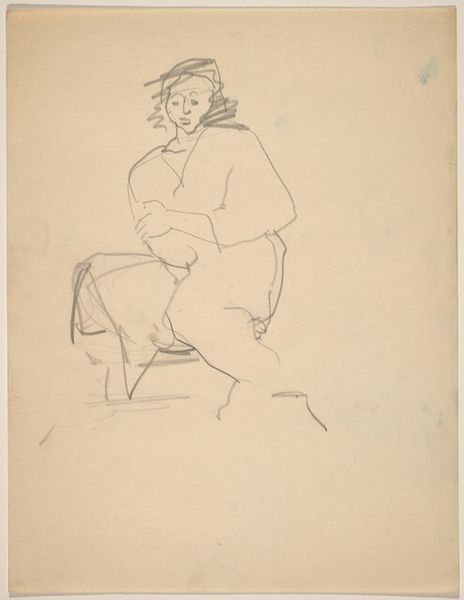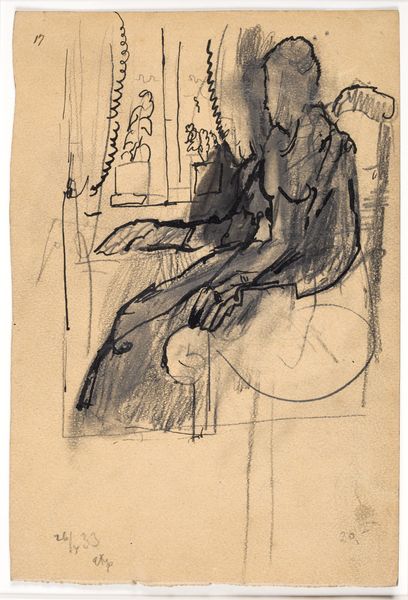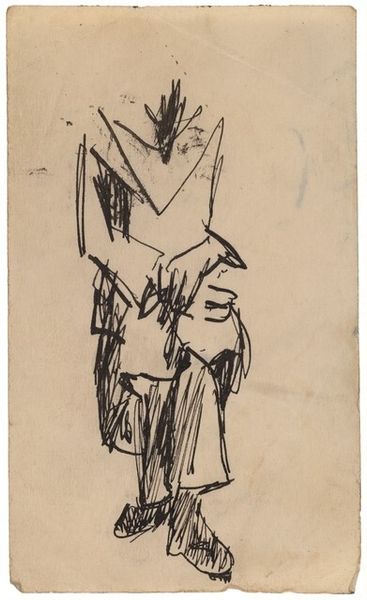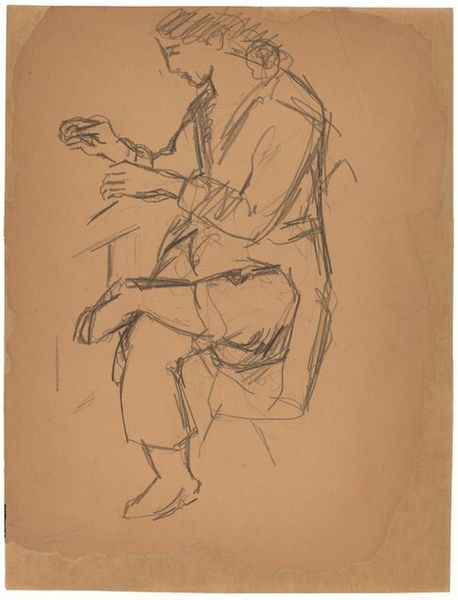
drawing, ink
#
drawing
#
ink drawing
#
pen sketch
#
figuration
#
ink
#
line
Dimensions: overall: 27.9 x 21.6 cm (11 x 8 1/2 in.)
Copyright: National Gallery of Art: CC0 1.0
Curator: This is a pen and ink drawing titled "Pregnant Woman Seated in Chair," by Mark Rothko. It’s part of his earlier, less well-known figurative work. Editor: There’s something stark about it, isn't there? The composition feels unbalanced, with so much empty space to the right, which paradoxically emphasizes the woman's solidity. Curator: Absolutely. Pregnancy, in art, carries such a wealth of symbolic weight: creation, potential, anticipation... In many cultures, the pregnant form is practically an icon. The simple, almost primitive lines here only amplify that core idea of burgeoning life. Editor: I find the use of line particularly interesting. Look at the rapid, almost scribbled hatching on the chair contrasted with the smoother curves defining her form. It’s as though the very structure she leans on is in opposition to the organic roundness of her belly. What do you make of the lack of detail, her featureless face, for example? Curator: Rothko gives us the archetype, the essential idea of "pregnant woman", and then asks us to fill in the details from our own collective cultural understanding and lived experiences. Her gaze, her thoughts – those are all ours to project. The facelessness taps into a universality. This primal condition predates individualized portraiture. Editor: But there's also a distancing effect, a coolness. The limited detail denies the viewer easy empathy. The woman appears thoughtful, her expression, although implied, is somber, even melancholic, perhaps? It resists any sentimentality about motherhood. Curator: That somberness you pick up on might speak to the burdens associated with bringing new life into the world – physically, emotionally, and societally. Reproduction, creation – these have consequences, often for women. The line of thought, propped up with her fingers to her face—does that pose remind you of *The Thinker*? Editor: A powerful visual counterpoint! This quick sketch yields more complex tensions that linger on the page; it avoids cliché in favour of an arresting graphic language that both seduces and confronts. It is much to observe in a composition so seemingly devoid of complexity. Curator: The simple line and barest details speak volumes about primal energies, life forces, and the complex relationship of woman to creation and the future. I keep coming back to this, to contemplate our cultural history regarding this act and the emotional, existential import Rothko manages to imbue.
Comments
No comments
Be the first to comment and join the conversation on the ultimate creative platform.
